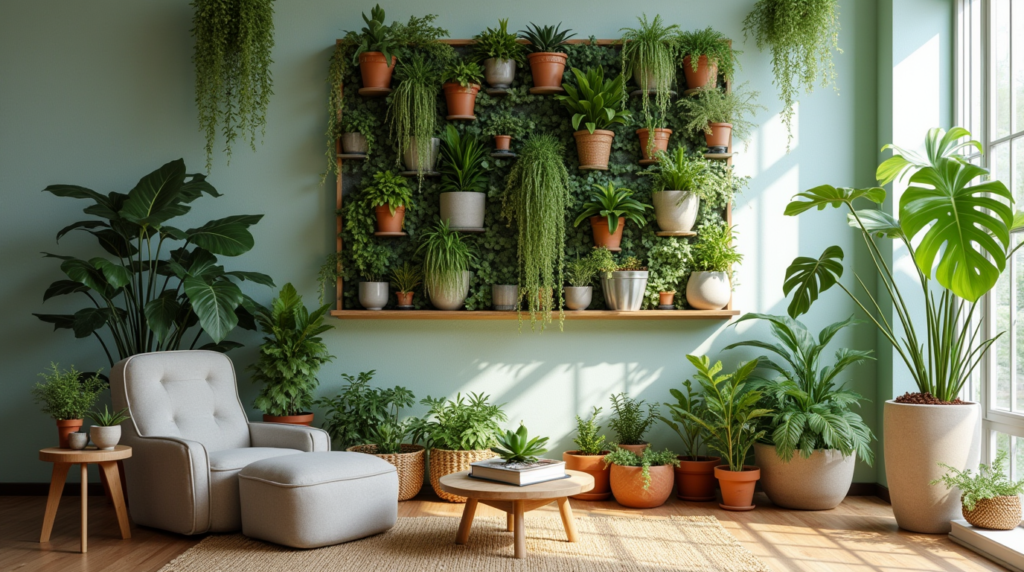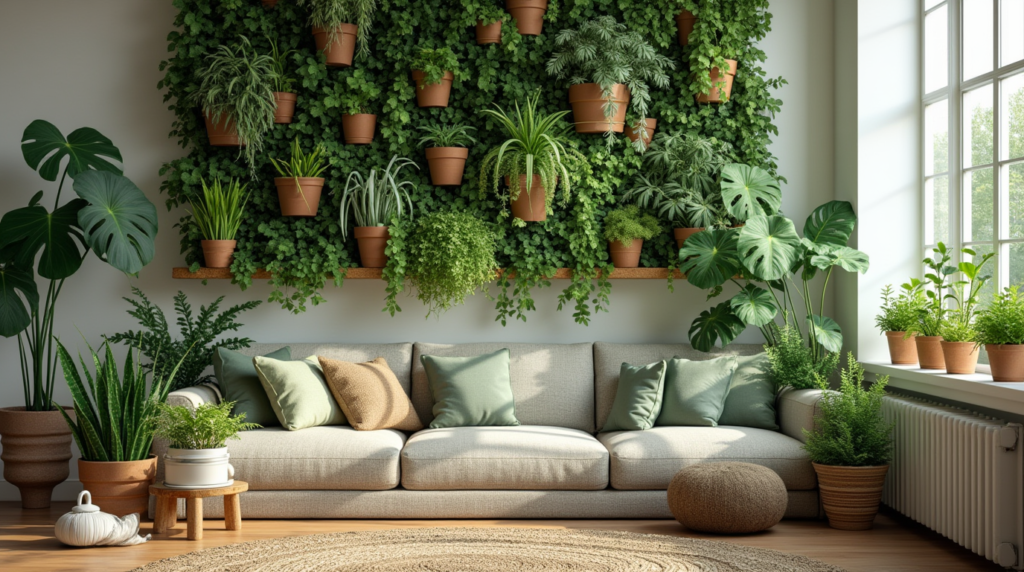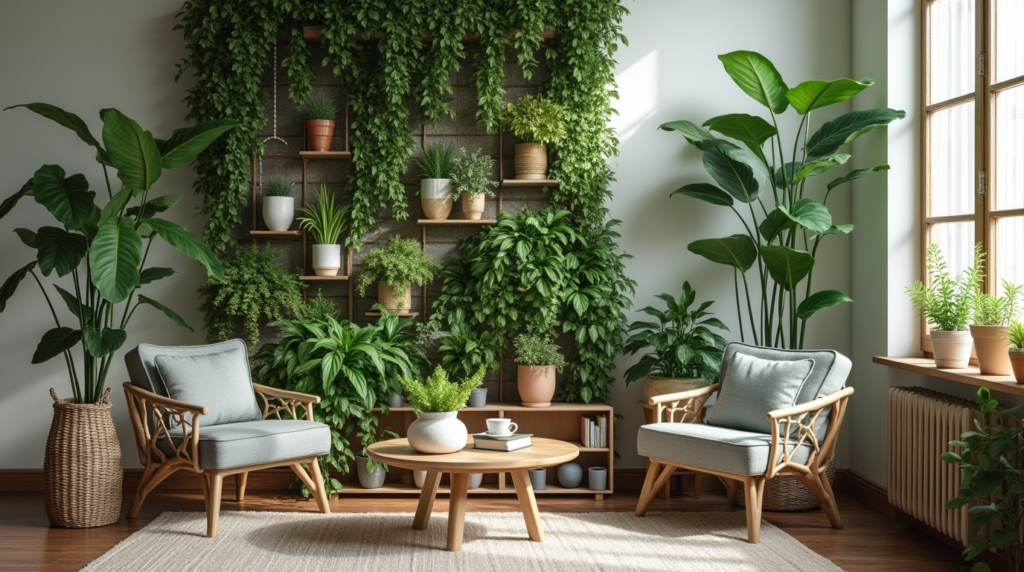There’s something profoundly uplifting about walking into a room filled with thriving houseplant. That gentle rustle of leaves, the vibrant splashes of green, and the subtle connection to nature they provide can transform not just our living spaces, but our overall wellbeing. Whether you’re a seasoned plant parent or just beginning your journey into indoor gardening, finding fresh houseplant inspiration can breathe new life into your home and spirit.
I still remember the day I brought home my first monstera deliciosa—how that single plant sparked a passion that would eventually fill my apartment with over fifty botanical companions. Each leaf, each new growth, each morning spent misting and pruning became a mindful ritual that grounded me in ways I never expected. Today, I’m excited to share with you five transformative approaches to revitalize your indoor garden and deepen your connection with these living wonders.
Table of Contents
Why Houseplants Matter: More Than Just Decor
Before diving into our creative strategies, let’s acknowledge why houseplants have become so central to modern living. Beyond their aesthetic appeal, houseplants offer numerous benefits that enhance our daily lives:
| Benefit | How Plants Help | Scientific Backing |
|---|---|---|
| Air Purification | Remove toxins like benzene, formaldehyde, and trichloroethylene | NASA Clean Air Study |
| Stress Reduction | Interacting with plants lowers cortisol levels | Journal of Physiological Anthropology research |
| Productivity Boost | Presence of plants can increase productivity by up to 15% | University of Exeter study |
| Humidity Control | Plants release moisture through transpiration | Environmental Health Perspectives findings |
| Biophilic Connection | Fulfill our innate need to connect with nature | Harvard University research on biophilia |
These living companions don’t just beautify our spaces—they actively contribute to creating healthier, more balanced environments for us to thrive in. Now, let’s explore how to take your houseplant experience to the next level.
1. Vertical Gardening: Reaching New Heights with Houseplant Design
Transform Unused Wall Space
When floor space is limited but your houseplant inspiration is boundless, the only way to go is up! Vertical gardening offers a revolutionary approach to maximizing your green footprint without sacrificing precious square footage.
Living walls or “green walls” have evolved from commercial installations to accessible home features. These stunning vertical arrangements create dramatic focal points while housing dozens of plants in a relatively small footprint.
DIY Vertical Garden Options:
- Pocket planters: Fabric hanging systems with individual pockets for plants
- Repurposed pallets: Transformed into rustic wall-mounted planters
- Grid systems: Wire frameworks that support multiple small pots
- Floating shelves: Strategically placed to create a cascading plant display
- Wall-mounted terrariums: Glass containers that create miniature ecosystems
“The vertical garden has transformed how we think about houseplant design,” says botanist and interior design consultant Maria Fernandez. “It’s no longer about finding space for plants—it’s about creating living art that happens to purify your air.”

For beginners, start with hardy trailing varieties like pothos, philodendron, or string of pearls that adapt well to vertical systems and create that coveted cascading effect.
2. Creative Clustering: The Art of Houseplant Grouping
Beyond the Lonely Potted Plant
Single plants scattered around a room can look disconnected and fail to make a visual impact. Embracing the concept of creative clustering allows you to compose plant groupings that create micro-ecosystems while delivering maximum visual appeal.
The key to successful clustering lies in thoughtful variety and arrangement. Consider these elements when creating your houseplant inspiration stations:
Elements of Effective Plant Clustering:
- Height variation: Combine tall statement plants with medium shrubby varieties and low-growing or trailing specimens
- Textural contrast: Pair feathery ferns with bold-leaved plants like calatheas or rubber plants
- Growth habit diversity: Mix upright, spreading, and cascading plants
- Pot coordination: Use complementary containers that either match or thoughtfully contrast
- Negative space: Allow breathing room between plants to highlight their individual beauty

“Plant clustering creates microclimates that can benefit the plants themselves,” explains horticulturist Dr. James Wong. “The combined transpiration increases humidity, which many tropical houseplants crave.”
One particularly effective approach is the “thriller, filler, spiller” method—featuring a dramatic centerpiece plant, medium-sized plants to fill the middle ground, and trailing varieties that cascade over the edges of your arrangement.
3. Unexpected Containers: Thinking Outside the Terracotta Pot
Reimagining What Holds Your Green Friends
Standard nursery pots and basic terracotta certainly serve their purpose, but unleashing your houseplant inspiration often means reimagining what can serve as a plant home. Unique containers not only showcase your creativity but can also enhance your décor theme and highlight your plants’ natural beauty.
Innovative Container Ideas:
- Vintage finds: Antique teapots, old toolboxes, or retro kitchen containers
- Woven elements: Handcrafted baskets, macramé hangers, or bamboo vessels
- Industrial touches: Concrete planters, metal ammunition boxes, or copper piping sections
- Repurposed items: Old boots, musical instruments, or hollowed books
- Natural materials: Driftwood pieces, coconut shells, or stone bowls
The key to success with unconventional containers is ensuring proper drainage. When working with non-traditional vessels, consider:
- Drilling drainage holes when possible
- Creating a false bottom with pebbles and activated charcoal
- Using the container as a decorative cache pot with a properly draining nursery pot inside
- Adjusting watering practices for containers without drainage
“The container is part of the plant’s presentation,” says interior stylist Juliette Lewis. “A thoughtfully chosen vessel can elevate a common plant into a showstopping design element.”
4. Specialized Plant Collections: Finding Your Botanical Focus
Becoming a Plant Specialist
While eclectic plant collections certainly have their charm, there’s something deeply satisfying about developing expertise with a particular plant family or type. Specialized collections allow you to refine your care skills, observe subtle variations, and potentially develop rare or uncommon varieties that bring unique houseplant inspiration.

Consider focusing your green thumb energy on one of these specialized collections:
Popular Specialty Houseplant Collections:
| Collection Type | Notable Varieties | Special Care Considerations |
|---|---|---|
| Aroids | Monstera varieties, Philodendrons, Anthuriums | High humidity, bright indirect light |
| Succulents | Echeverias, Haworthias, Crassulas | Well-draining soil, infrequent watering |
| Orchids | Phalaenopsis, Oncidium, Dendrobium | Specialized growing media, indirect light |
| Ferns | Boston, Maidenhair, Bird’s Nest | Consistent moisture, humidity, shade |
| Carnivorous Plants | Venus Flytraps, Pitcher Plants, Sundews | Distilled water, high light, special soil |
| Begonias | Rex, Cane, Rhizomatous | Moderate humidity, protection from direct sun |
“Specialized collections allow you to build deep knowledge rather than scattered experience,” explains botanical garden curator Thomas Chen. “You begin to notice subtle differences in care needs and can better anticipate problems before they arise.”
Many specialty plant collectors find community through social media groups focused on their preferred plant family, where they can exchange care tips, rare specimens, and celebrate new growth with like-minded enthusiasts.
5. Biophilic Design Integration: Blending Nature Seamlessly Into Your Space
Beyond Decorative Plants: Creating a Living Environment
The most profound houseplant inspiration comes when we move beyond thinking of plants as mere decorative objects and instead integrate them as essential elements of our living spaces. Biophilic design—incorporating nature and natural elements into built environments—represents the pinnacle of houseplant integration.
Elements of Biophilic Design with Houseplants:
- Natural light optimization: Positioning plants to thrive in available light while creating dynamic shadow play
- Biomimicry: Incorporating patterns found in nature throughout your décor
- Prospect and refuge: Creating both open, visible areas and cozy, sheltered nooks with plants
- Sensory stimulation: Including plants with interesting textures, scents, and even sounds (rustling leaves)
- Natural materials: Complementing plants with wood, stone, and other organic elements
- Living privacy screens: Using larger plants to define spaces and create natural room dividers
“True biophilic design doesn’t treat plants as accessories—it recognizes them as essential components of human-centered spaces,” notes environmental psychologist Dr. Amelia Richardson. “The goal is to create environments where the boundary between indoors and outdoors feels permeable.”
Consider designing entire spaces around plant needs, such as a reading nook beneath a statement fiddle leaf fig or a workspace surrounded by air-purifying varieties that enhance concentration.
Conclusion: Your Personal Houseplant Journey
The beauty of finding houseplant inspiration lies in discovering what resonates with your personal aesthetic, care capabilities, and living space. Whether you’re drawn to the architectural precision of a curated succulent collection or the wild abundance of a jungle-inspired corner, the plants you choose to nurture become extensions of your identity and values.
Remember that successful plant parenting isn’t about perfection—it’s about observation, adaptation, and growth (both for your plants and yourself). Each leaf that unfurls, each new root that forms is a silent celebration of the care you’ve invested.
I encourage you to implement at least one of these inspirational approaches in the coming week. Perhaps start small with a creative cluster on a coffee table, or reimagine a vertical space that’s currently underutilized. Document your plant journey through photos, noting not just how your space transforms, but how your relationship with these living organisms evolves.
Your houseplant inspiration is ultimately about creating not just a beautiful space, but a living sanctuary that breathes, grows, and changes alongside you.
FAQs About Houseplant Inspiration
What are the best houseplants for beginners seeking inspiration?
For beginners, focus on resilient plants that provide immediate houseplant inspiration while building your confidence: pothos, snake plants, ZZ plants, spider plants, and peace lilies. These varieties forgive inconsistent care while still offering visual impact and growth satisfaction.
How can I find houseplant inspiration when living in a small apartment?
Small-space dwellers should explore vertical gardening options, hanging plants, mini varieties, and wall-mounted systems. Consider plants that serve multiple purposes, such as herbs that provide both visual interest and culinary benefits, maximizing your houseplant inspiration without cluttering limited space.
What lighting conditions provide the best setting for houseplant inspiration?
While plant needs vary, most houseplant inspiration thrives in bright, indirect light. Southeast or southwest-facing windows often provide ideal conditions. For darker spaces, focus on low-light tolerant varieties like snake plants, ZZ plants, and certain philodendrons, or consider supplementary grow lights.
How often should I repot my plants to maintain houseplant inspiration?
Most houseplants benefit from repotting every 1-2 years, typically when they become root-bound. Signs your houseplant inspiration needs a new home include roots growing through drainage holes, slowed growth despite proper care, and water running straight through the pot without absorption.
Where can I find unusual plants to enhance my houseplant inspiration?
Beyond typical garden centers, explore specialty nurseries, botanical garden sales, plant swaps, online marketplaces, and plant-focused social media groups. Building relationships with other enthusiasts often leads to the most unique houseplant inspiration through cuttings exchanges and rare find alerts.

